Above the clouds, heaven on earth does exist in Wae Rebo village. The village has rarely anything in common with any tourism village in the country. Its location is secluded in Mount Poncoroko’s forest, East Nusa Tenggara. And way too far from the big town and modern life.
Some people, especially local tourists, may have not even heard about this community. But after several decades of living and preserving its culture and traditional conical houses called Mbaru Niang. The village and community are getting more recognition thanks to the UNESCO award in 2012.
Every guest that comes to Wae Rebo village will immediately feel secluded and drawn back into the distant past. Holding tight to its traditional values, the village separates itself from the outside world. There is not much sign of modernity to trace, including phone signal.
Hence making it a perfect place to hide from the fast-paced world. Even though getting there takes serious effort and is nowhere near easy.
Wae Rebo Village Entrance Fee
Tourists who intend to visit the village should have to prepare an extra cost. First, it’s the compulsory ceremony, Rp50.000. Then the entrance fee to Wae Rebo village is Rp200.000 for non-staying guests. While for tourists who wish to stay overnight, it cost Rp325.000 to stay in the local’s house. Both staying and non-staying guests will get meals. Guide service is available in the village down and ranges from Rp200.000 to Rp250.000.
| Wae Rebo Village Entrance Fee | |
| Entrance Fee | Rp200.000 (non-staying guest) / Rp325.000 staying guest |
| Ceremony | Rp50.000 |
| Guide service | Rp200.000 – Rp250.000 |
See: Padar Island Guide, Diving Spot & Activities.
Wae Rebo Village Opening Hours
There has never been an official opening hour in Wae Rebo Village. However, to pay respect, avoid visiting the village at night. Besides, it is quite impossible to go up at a late hour. There is no lighting in the rainforest and is severely dangerous. With all the wild lives inside the forest. Instead, depart in the early morning for the best visit timing. That should give enough time for one-day visitors to go down before dark.
| Wae Rebo Village Opening Hours | |
| Every day | Open 24 Hours |
See: Kelimutu National Park, Activities & Entrance Fee.
Trekking To Wae Rebo Village
Located in 1200 AMSL, it may take a 3-4 hour hike through 7 kilometers of mountain tracks. Of course, it depends, incredibly fit people could have reached the village in 2 hours. The first 5 kilometers are the hardest, with steep and slippery tracks.
However, the remaining 2 kilometers only require lite trekking through the slopes. It is still challenging, though the path is descending. Despite it all, the picturesque highland scenery would’ve made the effort feel less difficult. And the first sight of Wae Rebo Village will wash all the exhaustion.
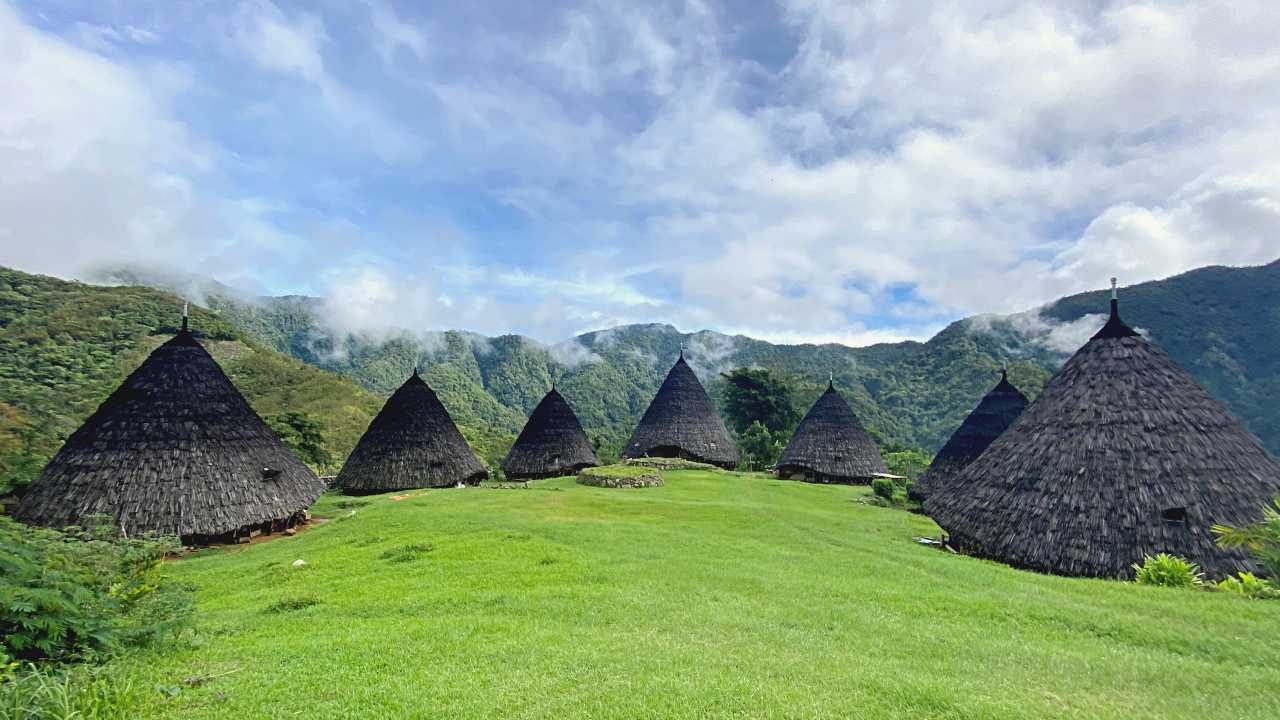
Welcoming Ceremony
Before entering the space, go to Rumah Kasih Ibu first, as it is mandatory. The house on stilts stands right at the entrance, thus easy to spot. From there, ring the bamboo instrument to notify the locals of incoming visitors. Only after that everyone may enter the deeply hidden paradise.
The locals will ask each comer to engage in a traditional welcome ceremony. The ritual will take place in the village center, Rumah Gendang. From arriving until the ceremony is over, guests will not be allowed to do any activities in the village. Also, prepare Rp50.000 in cash for the ceremony’s donation.
As the ceremony ends, roam around the village freely, yet respectfully. The first thing to explore is definitely the communal traditional houses. Made from wood with dark-colored lontar thatch. Each house consists of five floors with a living place on the bottom level. According to history, houses already exist for nineteen generations.
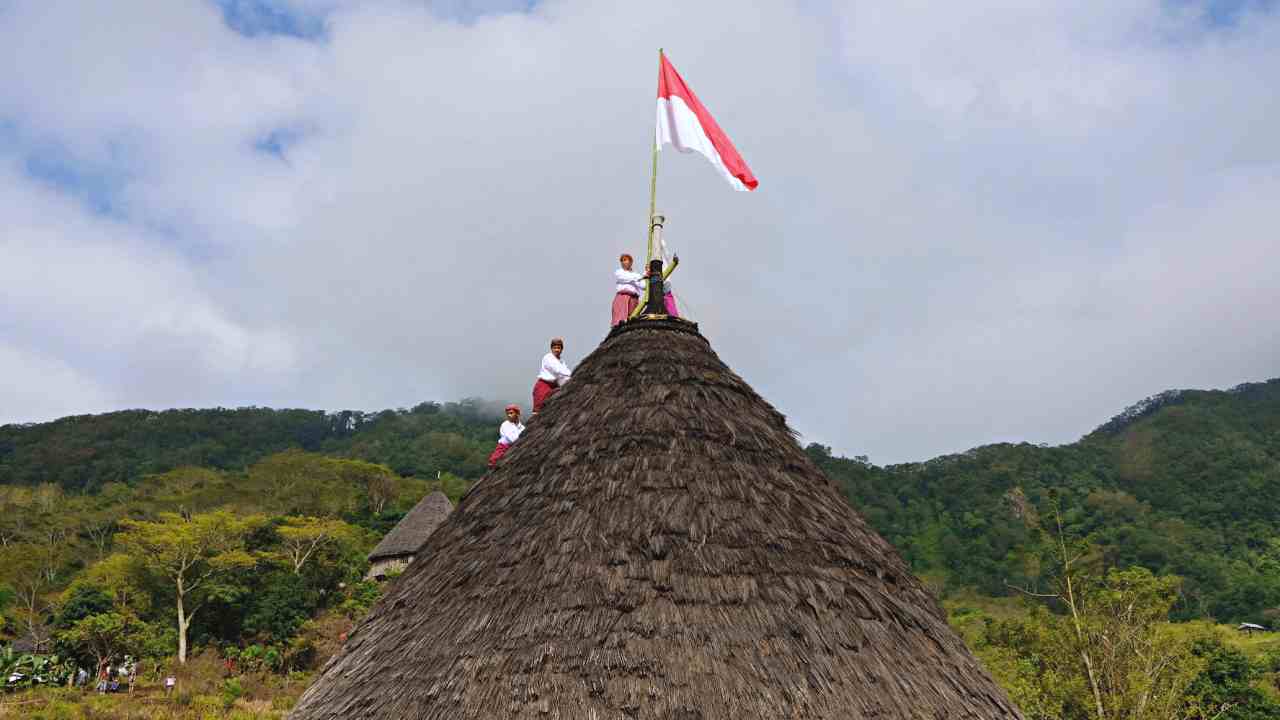
Photo Hunting
Wae Rebo Village is entirely blessed with natural gifts all around. Hills in a row, forest, plantation, and the seemingly reachable wide sky. No wonder it becomes one of the most beautiful villages in the world. Being deserted, there is nothing more serene than seeing a community nestled in the forest surrounded by hills.
Every corner here is undebatable photo-worthy. The panoramic view gives spectacular angles for anyone who wants to snap memories. The good news is drone use is allowed in the area. However, do not immediately bring out the camera upon arrival. Get permission from village heads first before taking any pictures.
To adventurers, go deep to explore the forest and plantation. However, for safety, it is best to ask for a local company. It minimizes the risk of getting lost along the way. Because everything around is still wildlife nature.
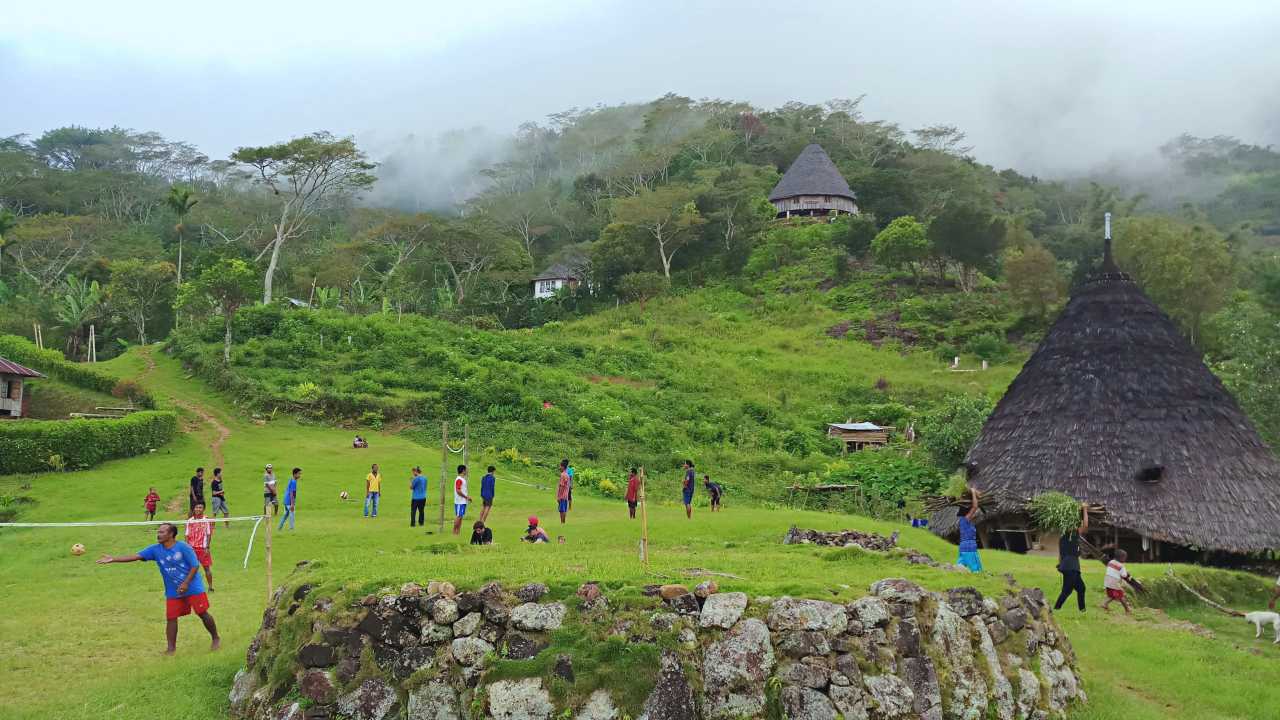
On a side note, bear from saying harsh, improper words in the entire area. Nature is very sacred to the locals, thus be respectful as a visitor.
Coffee Tasting
Today, Flores coffee has gained more and more popularity and is acknowledged internationally. Thanks to the quality of robusta and arabica beans from the locals’ plantation. Flores coffee is famous for its strong taste and slightly fruity touch.
Even sometimes a real coffee enthusiast went all the way, rushing over to taste the coffee directly at the origin. Even if it takes a long walk through the mountains and hills.

Do not worry about falling in love too hard with the coffee-tasting experience. Because the locals also sell coffee for travelers to bring back home. The price for Flores coffee range from Rp80.000 to Rp200.000 for one kilogram.
While in the village, use the chance to see how spectacular coffee beans are produced. Local farmers will be more than happy to assist visitors through this experience. From picking the beans to grinding them. Don’t forget to buy the coffee bean too, it’s the locals’ prime commodity after all.
Interact with the Locals
The locals are the reason Wae Rebo Village feels close to heart. Because all of them are known for their kindness and friendliness. Therefore, don’t hesitate to greet and talk with them during the brief visits.
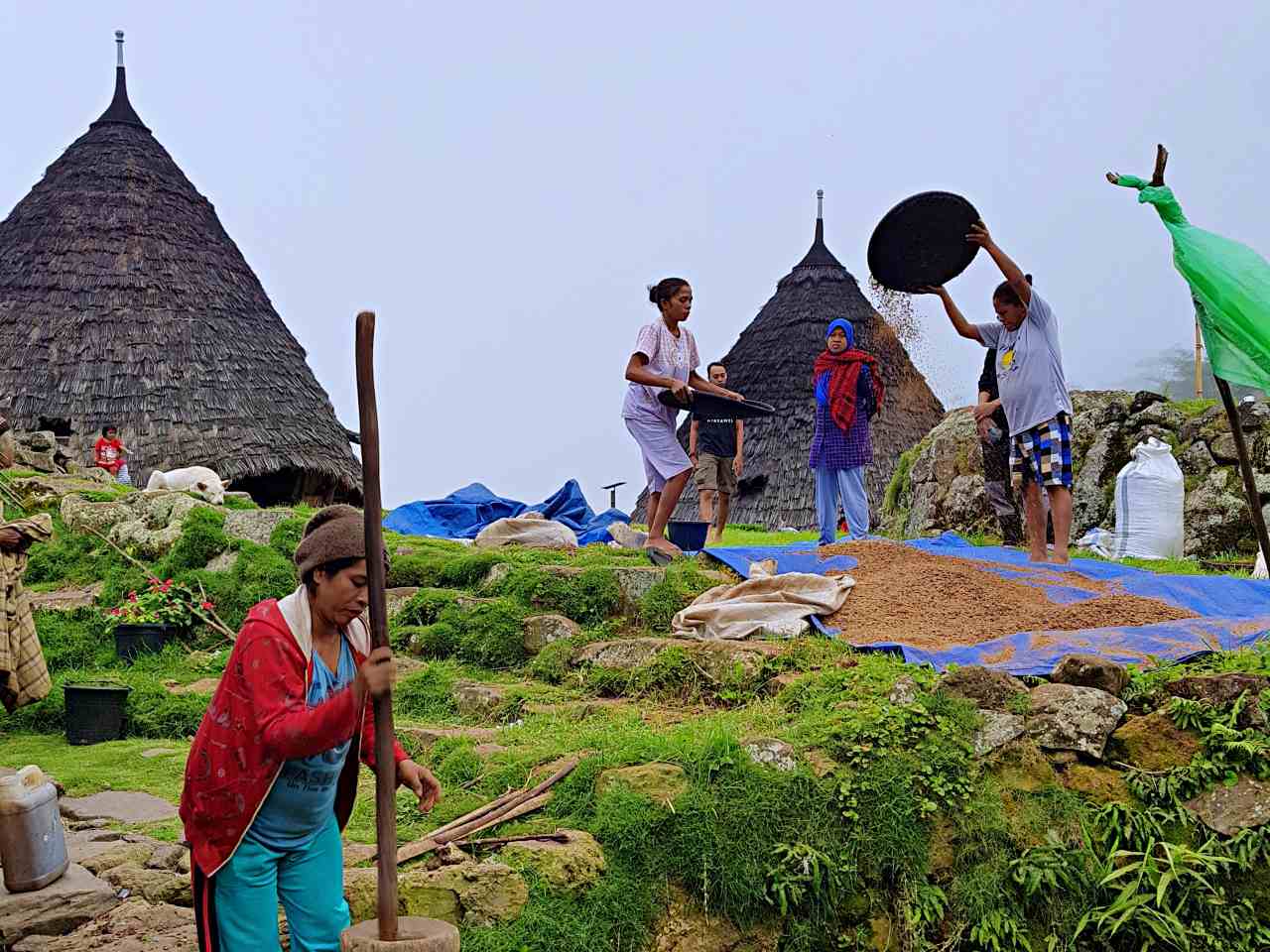
Ask the guides or other local visitors to help with the translation. Or else basic body language can be a savior too. However, it’ll be useful to learn a few words. The kids and the elders spend most of their time inside the secluded village.
While the men usually do the planting and harvesting tasks. The women stay for household activities and weaving tenun fabric. Without technology and modern tools, visitors will get to remember how life was back then. All simply by witnessing life in Wae Rebo village.
Make some time to play with the kids in the village. Every one of them loves to interact with new people. Sometimes, even help the travelers explore the area at close range. Therefore, upon visiting, it will be great to bring some educational books for kids. The official will keep the book in the reading house, where the kids usually go.
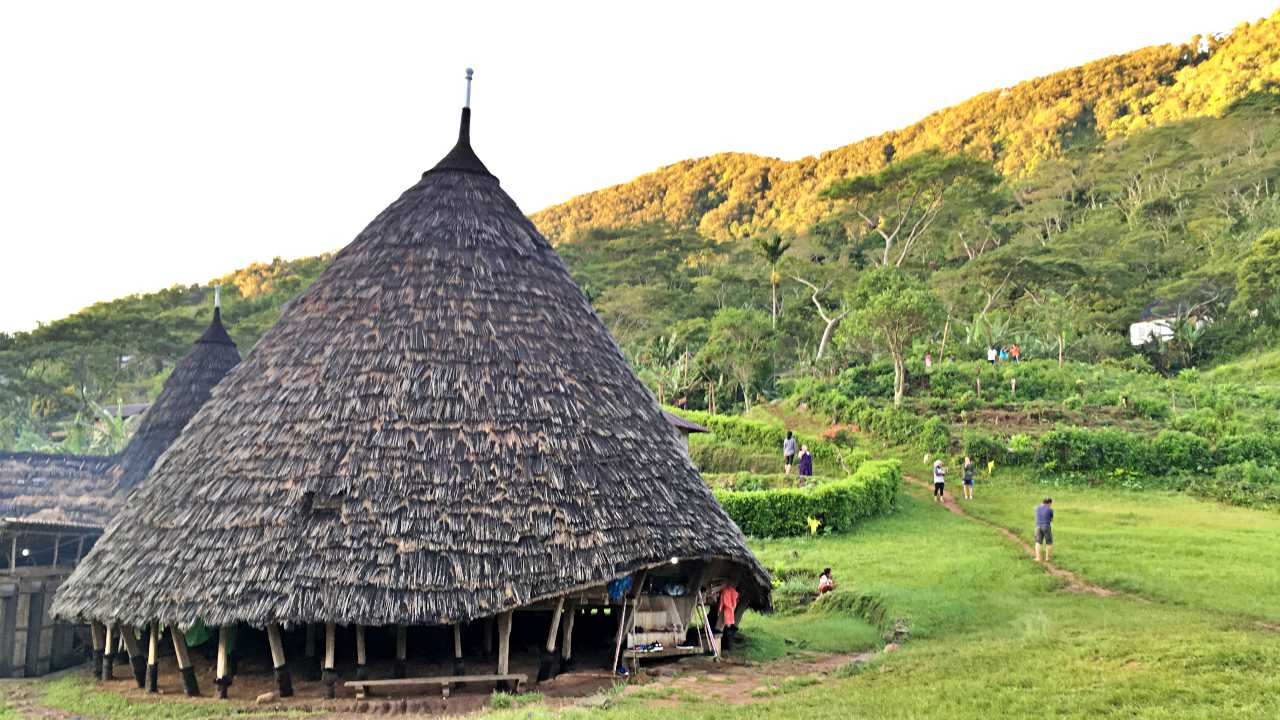
Stay Overnight to Witness More
One day is actually not enough to explore everything Wae Rebo village owns. That is due to the fact that the night sky view is unexplainably wonderful. If lucky, a milky way will be vividly visible to every pair of eyes that see. Therefore, many travelers decide to stay overnight in the village. Also for the fact that rest is needed after long hours of trekking.
However, there is no hotel or guesthouse in the area. Hence, the only option is to stay at the locals’ house. Travelers will gather in one house and sleep together on the first floor. The house owners will provide a thin mattress and warm blanket to use.
However, it will not hurt to bring extra neck pillows and a blanket. Because the weather can freeze down to 18º Celcius at night! Especially in the dry season between July to September.
For the dinner, the adult woman or Mama will cook simple yet heartwarming local dishes. Instead of eating separately, everyone should gather and eat together. After dinner, choose between going straight to bed or going out to explore more. Here, it is always better to stay late and observe what the night sky has to show.
See: Indonesia SIM Card Price, Internet Package & Provider.
Facilities
There are no modern facilities in the area, except the basic one. The communal toilets and bathroom. Being on a mountain, Wae Rebo is far from the market that sells essentials. There is also no shop in the village that sells daily basics. Therefore, make sure to prepare everything before going up to the mountain.
See: Komodo Island Guide, Trek & Activities.
How To Get To Wae Rebo Village
First of all, travelers have to go to Ruteng city. There is a direct flight available from Bali to the city. It is also possible to catch a bus from Labuan Bajo. The cost should range around Rp100.000-Rp300.000 for one way. From Ruteng city, continue the journey to Denge village. It takes approximately two hours to drive and the village is the last point reachable with a vehicle.
There are two ways to choose between a motorcycle (ojek) or a catch local truck to Denge. The truck itself is equipped with wooden benches for passengers to sit on. And the fare is cheaper compared to renting a private vehicle. Just Rp30.000 per person for one way. Meanwhile, the comparison is very far with ojek but way much faster. It costs around Rp150.000 to Rp200.000 per trip.
In Denge Village, travelers can stay at the accommodations or climb immediately. Find the climbing starting point to Wae Rebo or Pos 1 about 15 minutes away from Denge. Note in mind that the only way to get to the village is by hiking. Therefore, starting from there, everyone should bid goodbye to vehicles.
The tracking path toward Wae Rebo Village is already designated, although not paved. However, it is always better to hire guides at the starting point. Because there are many intersections in the mountain. It might confuse first-timers who are not familiar with the surrounding. Hiring a local guide can cost around Rp200.000. With the price, it is a safe bet that the climbing will be safe with experts’ company.
See: Komodo International Airport & Public Transportation Guide.
Address & Location
The tourism village is situated in Satar Lenda, Satar Mese Bar, Manggarai regency, East Nusa Tenggara 86560.

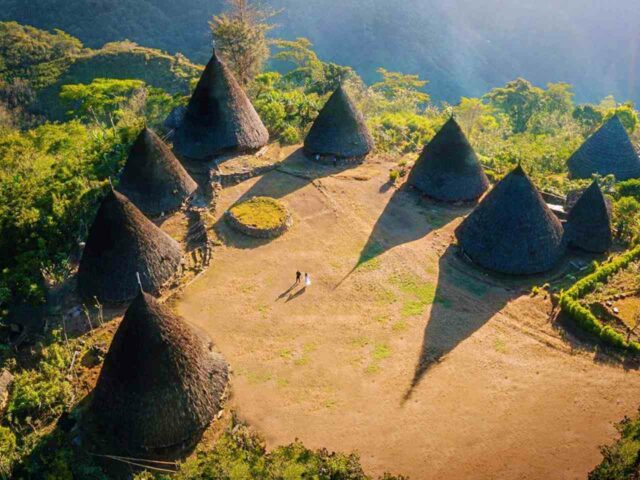





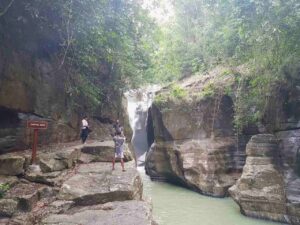
I would like to buy a ticket for this for 9.8.24
Please contact me via what’s app